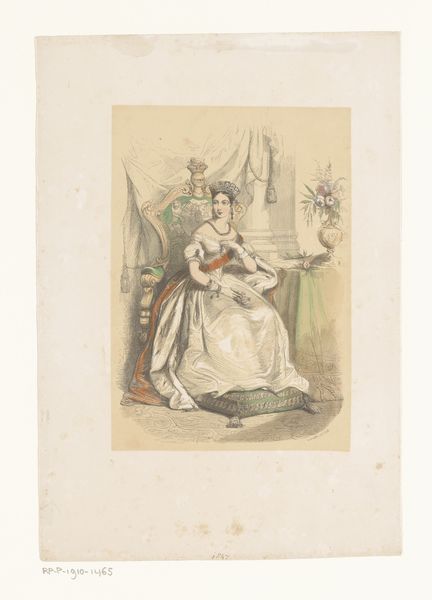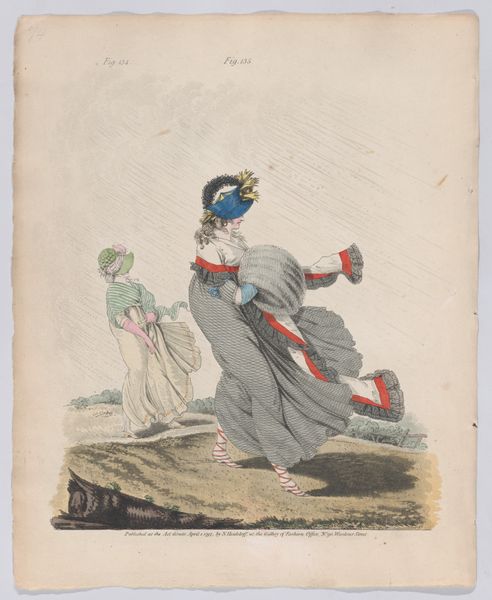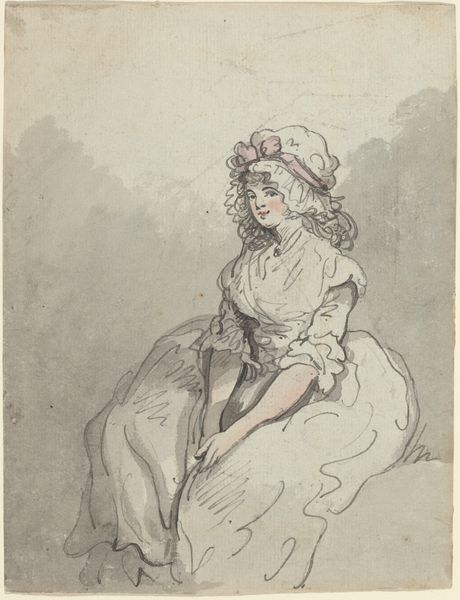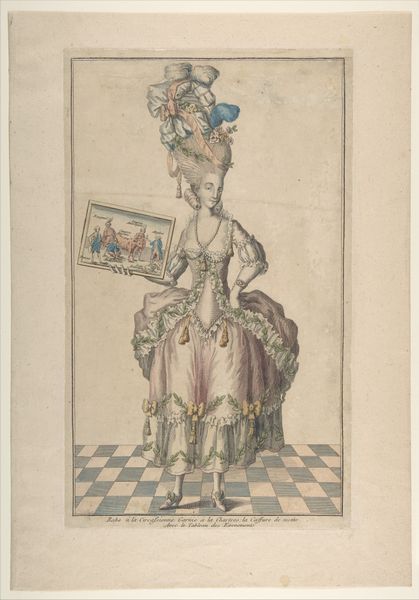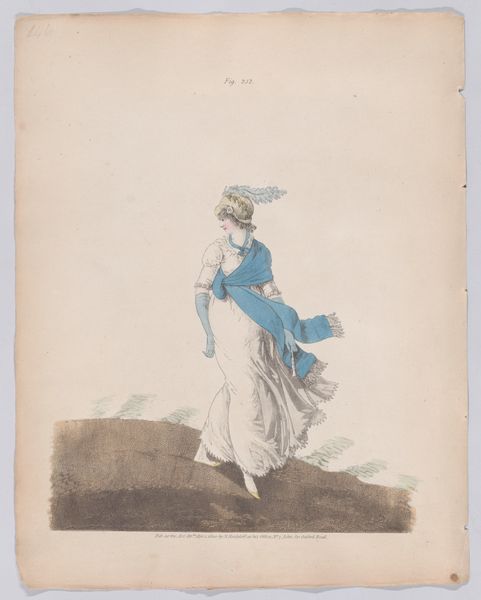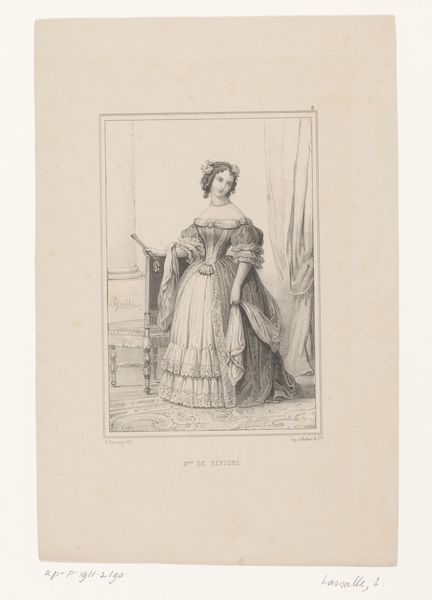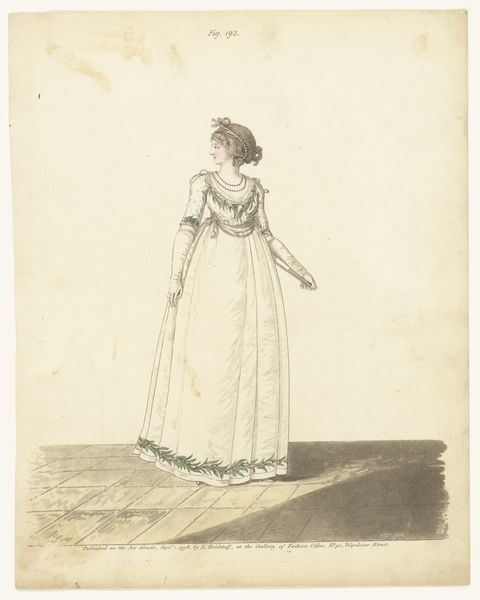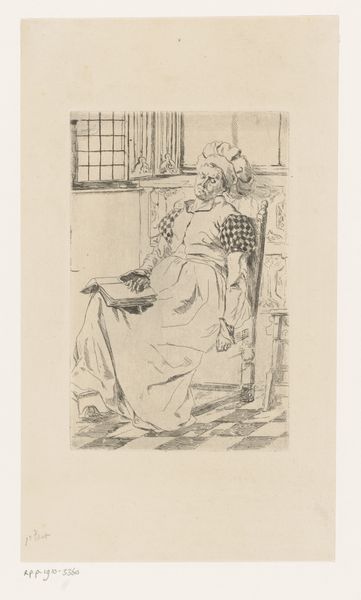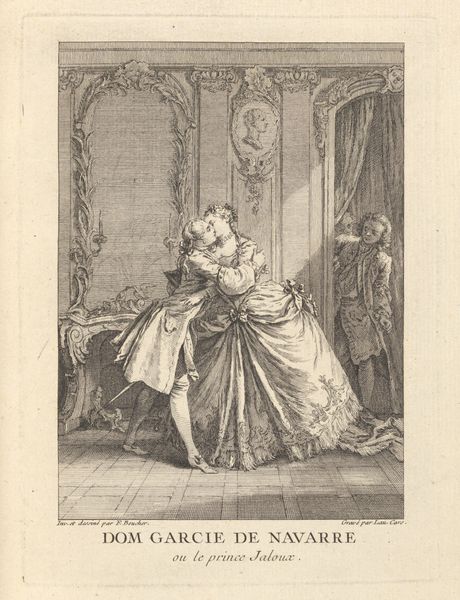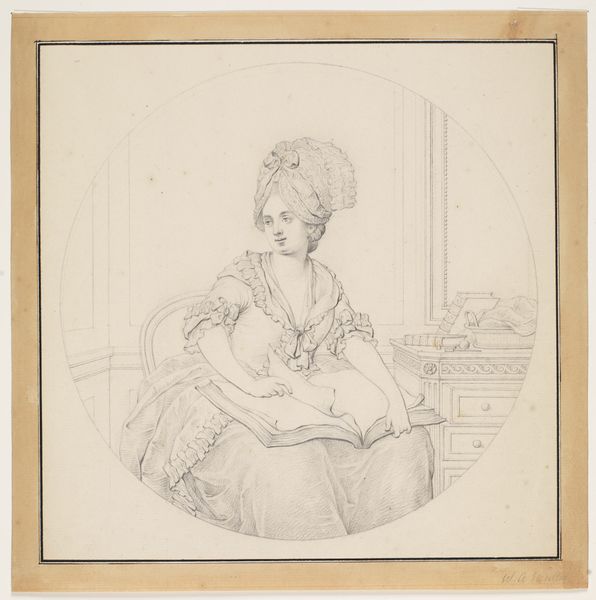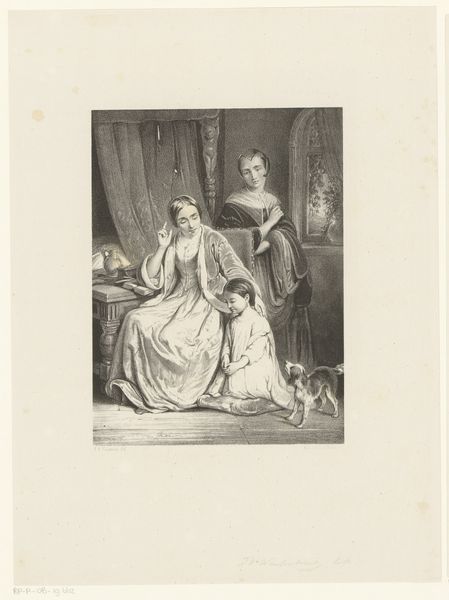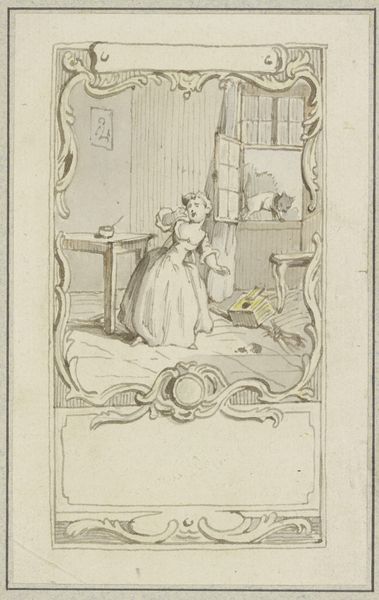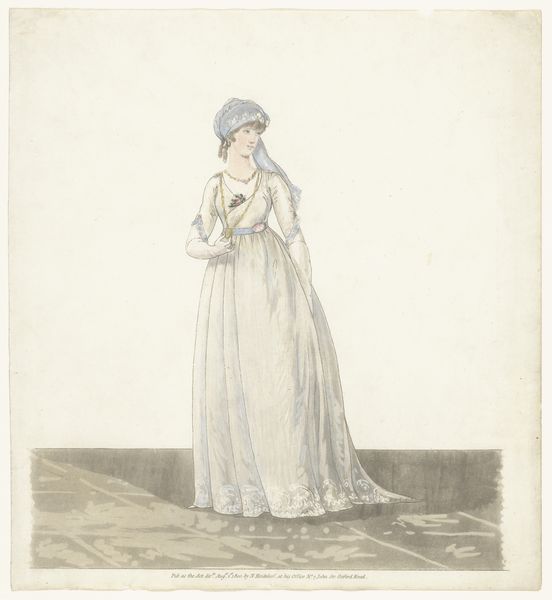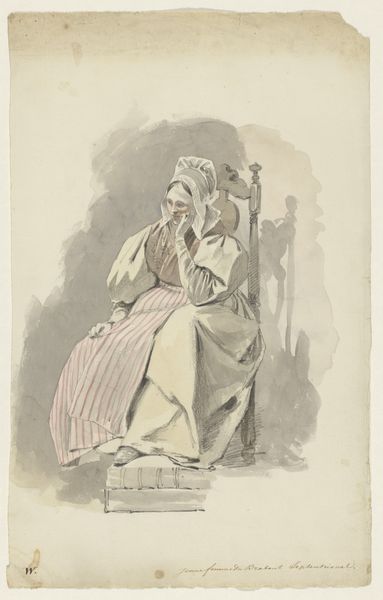
plein-air, watercolor
#
portrait
#
plein-air
#
landscape
#
watercolor
#
romanticism
#
watercolour illustration
#
genre-painting
Dimensions: height 258 mm, width 216 mm
Copyright: Rijks Museum: Open Domain
Curator: This is "Lezende vrouw op een kade, zeilschepen in de achtergrond," or "Woman Reading on a Quay, with Sailing Ships in the Background" by Wilhelm Arndt, created sometime between 1799 and 1813. It's currently held at the Rijksmuseum. Editor: The watercolor medium gives it such an airy, dreamlike quality. The composition is simple but effective—the woman anchoring the foreground with the ships adding depth. Curator: Absolutely. Arndt captures a particular kind of bourgeois leisure, doesn't he? The production of this scene--the watercolor itself and its potential to be widely disseminated through prints—speaks to the democratizing forces at play during the Romantic era. Think of the rise of a leisure class with disposable income… Editor: Yes, the crisp linearity emphasizes the forms. The rhythmic repetition of masts and spars provides a structural counterpoint to the woman's pose. I’m also intrigued by her contrapposto; the twist in her body creates visual interest. It also enhances a somewhat wistful reading of this image. Curator: Considering the social conditions of the time, it suggests the evolving role of women within a shifting public sphere. Reading wasn't just a passive activity; it became an assertion of agency within societal constraints. Note the textures of the brick contrasted to her clothing. Editor: I notice a stark contrast between the warm earth tones of the brickwork and the cooler, almost ethereal blues and whites in the sky and the woman's dress. It separates and also marries the architectural and organic forms together, allowing a dynamic, dialectical reading of place to occur. Curator: It's a dance between individual and industry! We get that clear separation with this particular watercolor process and style. And, it does force one to question labor during this historical moment and question assumptions regarding artistic hierarchies that have been built. Editor: That’s a powerful reading. The watercolor creates a world where form and color combine, enabling deeper interpretation and reflection, and questioning the relationship between objective visual analysis and historical circumstances of materiality. Thank you! Curator: Likewise. Considering the societal changes represented adds valuable nuance. I leave with further admiration of how even ‘simple’ watercolors like this can become critical tools!
Comments
No comments
Be the first to comment and join the conversation on the ultimate creative platform.
